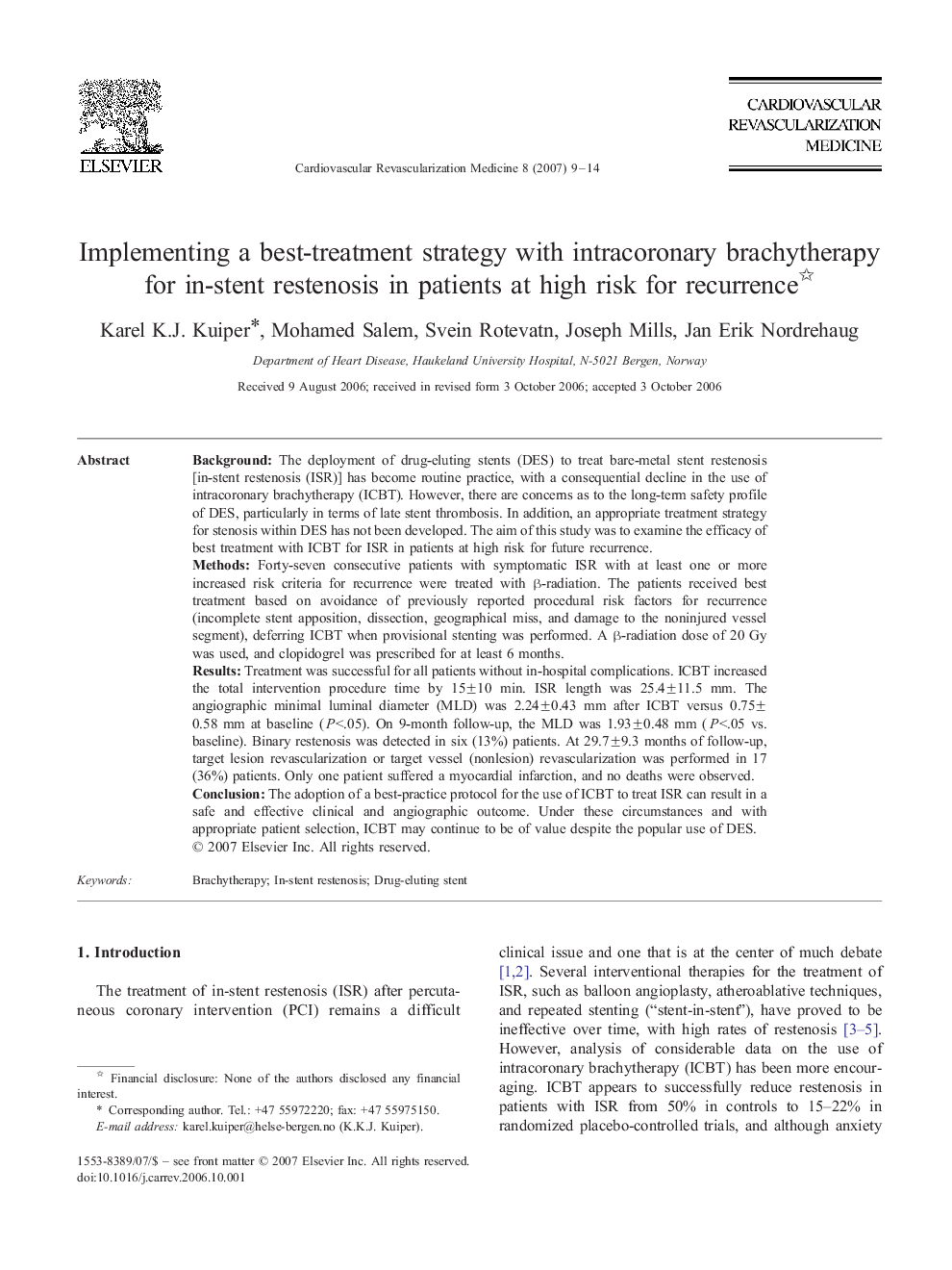| کد مقاله | کد نشریه | سال انتشار | مقاله انگلیسی | نسخه تمام متن |
|---|---|---|---|---|
| 2838149 | 1164914 | 2007 | 6 صفحه PDF | دانلود رایگان |

BackgroundThe deployment of drug-eluting stents (DES) to treat bare-metal stent restenosis [in-stent restenosis (ISR)] has become routine practice, with a consequential decline in the use of intracoronary brachytherapy (ICBT). However, there are concerns as to the long-term safety profile of DES, particularly in terms of late stent thrombosis. In addition, an appropriate treatment strategy for stenosis within DES has not been developed. The aim of this study was to examine the efficacy of best treatment with ICBT for ISR in patients at high risk for future recurrence.MethodsForty-seven consecutive patients with symptomatic ISR with at least one or more increased risk criteria for recurrence were treated with β-radiation. The patients received best treatment based on avoidance of previously reported procedural risk factors for recurrence (incomplete stent apposition, dissection, geographical miss, and damage to the noninjured vessel segment), deferring ICBT when provisional stenting was performed. A β-radiation dose of 20 Gy was used, and clopidogrel was prescribed for at least 6 months.ResultsTreatment was successful for all patients without in-hospital complications. ICBT increased the total intervention procedure time by 15±10 min. ISR length was 25.4±11.5 mm. The angiographic minimal luminal diameter (MLD) was 2.24±0.43 mm after ICBT versus 0.75±0.58 mm at baseline (P<.05). On 9-month follow-up, the MLD was 1.93±0.48 mm (P<.05 vs. baseline). Binary restenosis was detected in six (13%) patients. At 29.7±9.3 months of follow-up, target lesion revascularization or target vessel (nonlesion) revascularization was performed in 17 (36%) patients. Only one patient suffered a myocardial infarction, and no deaths were observed.ConclusionThe adoption of a best-practice protocol for the use of ICBT to treat ISR can result in a safe and effective clinical and angiographic outcome. Under these circumstances and with appropriate patient selection, ICBT may continue to be of value despite the popular use of DES.
Journal: Cardiovascular Revascularization Medicine - Volume 8, Issue 1, January–March 2007, Pages 9–14